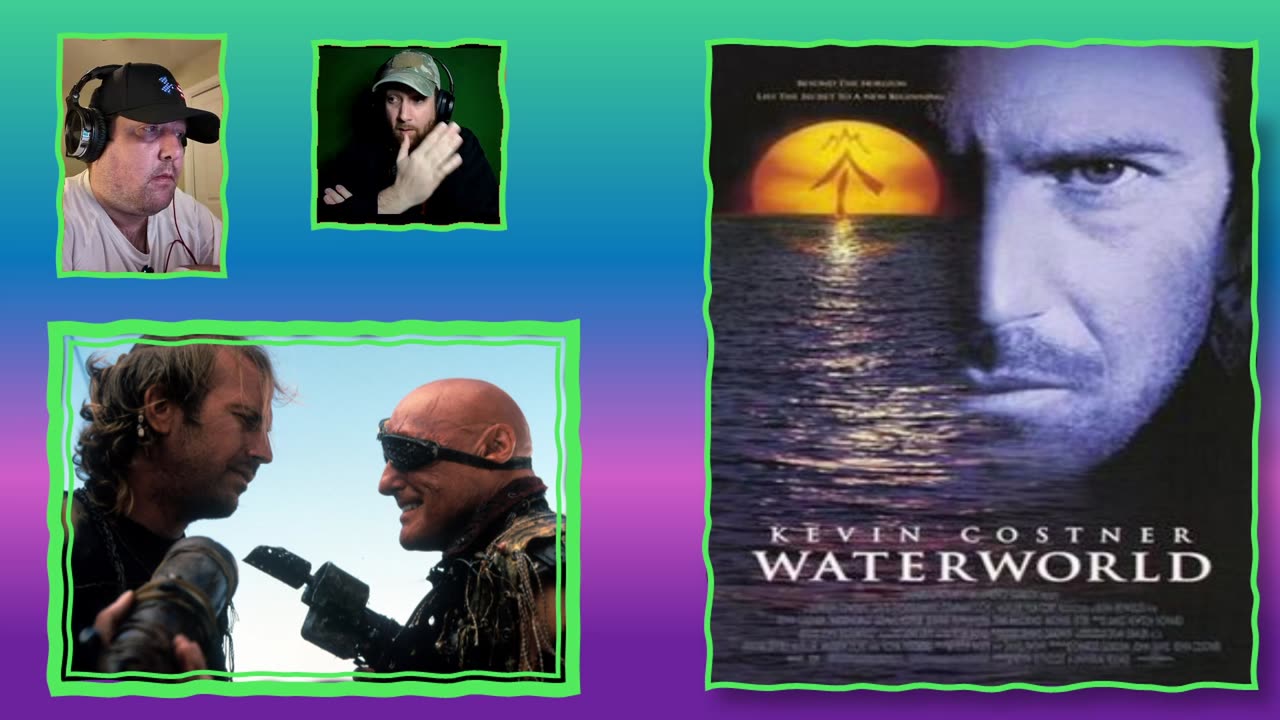Premium Only Content

Water World Review
Waterworld is a 1995 American post-apocalyptic action film directed by Kevin Reynolds and co-written by Peter Rader and David Twohy. It was based on Rader's original 1986 screenplay and stars Kevin Costner, who also produced it with Charles Gordon and John Davis. It was distributed by Universal Pictures.
The setting of the film is in the distant future. The polar ice caps have completely melted, and the sea level has risen over 7,600 m (25,000 ft), covering nearly all of the land. The plot of the film centers on a nameless antihero, "The Mariner" (Costner), a drifter who sails the Earth in his trimaran.
The most expensive film ever made at the time, Waterworld was released to mixed reviews from critics, who praised the futuristic setting and premise but criticized the execution, including the characterization and acting performances. The film also was unable to recoup its massive budget at the box office despite being the ninth highest-grossing film of 1995; however, the film did later become profitable owing to video and other post-cinema sales. The film was nominated for an Academy Award in the category Best Sound at the 68th Academy Awards.
Throughout the movie, The Smokers and Kevin Costner keep running into each other until the girl is kidnapped and taken to the ruins of the Exxon Valdez. Kevin Costner single handedly defeats the Smokers and rescues the girl. Eventually they make it to Dryland which at one point was Mount Everest and Kevin Costner resumes his seafaring ways.
There exists a cut called the Ulysses Edition that explains more of the back story and gives Mariner the name Ulysses. Portions of this was used for television editions but has not been made available to the public.
After several rewrites, Kevin Costner and Kevin Reynolds joined the Waterworld production team in 1992. The film marked the fourth collaboration between Costner and Reynolds, who had previously worked together on Fandango (1985), Robin Hood: Prince of Thieves (1991), and Rapa-Nui (1994), the latter of which Costner co-produced but did not star in.[9] Waterworld was co-written by David Twohy, who cited Mad Max 2: The Road Warrior as a major inspiration. Both films employed Dean Semler as director of photography.
During production, the film was plagued by a series of cost overruns and production setbacks. Universal initially authorized a budget of $100 million, which by mid-1994 had swollen to $135 million, with final costs reaching an estimated $175 million, a record sum for a film production at the time. Filming took place in a large artificial seawater enclosure similar to that used in the film Titanic two years later; it was located in the Pacific Ocean off the coast of Hawaii. The final scene was filmed in Waipio Valley on the Big Island, also referred to as The Valley of Kings. Additional filming took place in Los Angeles, Huntington Beach, and Santa Catalina Island, and the Channel Islands of California. Before filming began, Steven Spielberg had warned Costner and Reynolds not to film on open water owing to his own production difficulties with Jaws.The production was hampered by difficulties in obtaining otherwise simple shots due to poor weather, safety concerns, and the camera crew being pushed out of position by waves. One of the floating sets sank in heavy seas, and had to be repaired. Eventually the production had to be extended by nearly three months, from 96 days to over 150. The state of Hawaii had more than $35 million added to its economy as a result of the colossal film production.
-
 3:02:41
3:02:41
TimcastIRL
8 hours agoABC REVIVES Jimmy Kimmel After TERROR Attack On Station, Sinclair REFUSES To Air Show | Timcast IRL
258K147 -
 2:32:12
2:32:12
The Charlie Kirk Show
8 hours agoTPUSA Presents This is The Turning Point Tour LIVE with Michael Knowles
136K64 -
 5:20:38
5:20:38
Drew Hernandez
12 hours agoDISNEY CUCKS FOR KIMMEL & ADDRESSING THE CHARLIE KIRK MEMORIAL AFTERMATH
58.1K19 -
 1:02:28
1:02:28
Flyover Conservatives
12 hours agoThe Most Overlooked Way to Fight Abortion (It’s Not Protests) - Robert Netzly; Why Triple-Digit Silver is Coming - Dr. Kirk Elliott | FOC Show
47.4K3 -
 1:55:33
1:55:33
Glenn Greenwald
11 hours agoDeceitful Hysteria over Tucker's Speech on Kirk; IDF Funder Larry Ellison to Take Over CBS, Paramount, and now TikTok; U.S. Embraces Leading Al-Qaeda Terrorist | SYSTEM UPDATE #519
211K100 -
 34:40
34:40
Donald Trump Jr.
12 hours agoWe Will Make Charlie Proud | TRIGGERED Ep.276
220K93 -
 1:01:49
1:01:49
BonginoReport
11 hours agoErika Kirk Forgives Charlie’s Assassin - Nightly Scroll w/ Hayley Caronia (Ep.139)
123K105 -
 1:54:19
1:54:19
megimu32
8 hours agoOn The Subject: Rush Hour | Would It Be Cancelled Today?
47.9K6 -
 1:24:12
1:24:12
Katie Miller Pod
11 hours ago $3.48 earnedEpisode 7 - Jillian Michaels | The Katie Miller Podcast
85.3K5 -
 13:09:57
13:09:57
LFA TV
1 day agoLFA TV ALL DAY STREAM ! | MONDAY 9/22/25
245K49